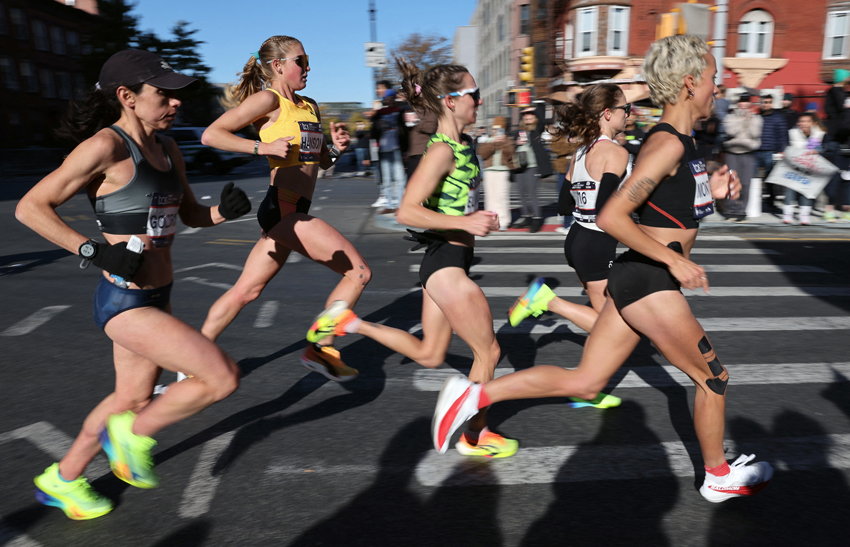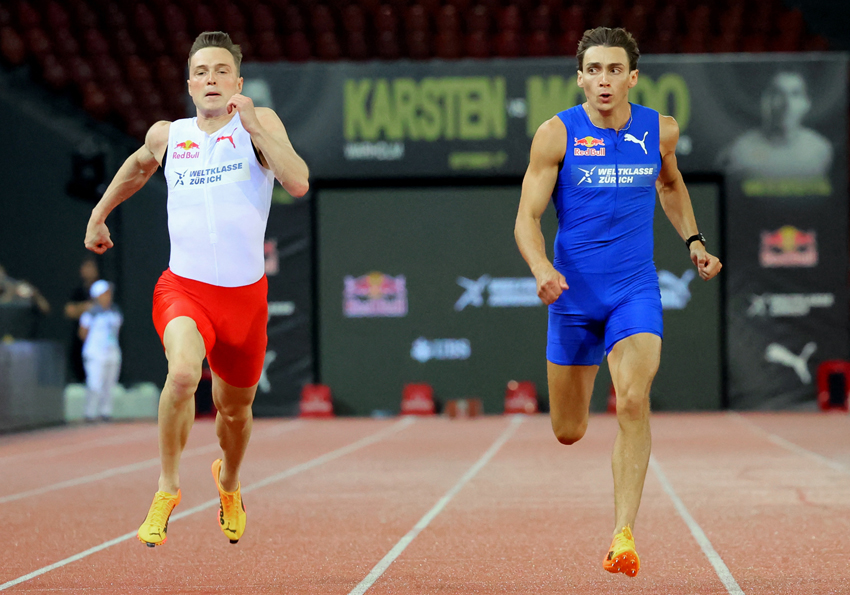Plasma expansion
If you're an endurance athlete, you need more blood than the individual who sits around watching the telly.
After all, having a high blood volume reduces heart rate during exercise, delivers more oxygen to hard-working muscles, sends more red-hot blood to the skin for cooling, and furnishes a reserve supply of internal fluid, so that sweat rates can remain pleasantly high during exercise. Not surprisingly, an increase in blood volume is one of the basic physiological adjustments which the human body makes in response to endurance training.
The beneficial role of blood-volume expansion has caused some athletes to wonder whether they can 'cheat' - ie, do rather unusual things to increase blood volume to exceptionally high levels before important competitions. There are basically two ways to do this: you can adjust your training to promote higher blood reserves, or you can run a solution containing a chemical called dextran into your veins. Dextran hangs around in the blood for a while, drawing in water by a process called osmosis.
In recent research at the University of Utah, the dextran gambit worked very well - but not better than a training-induced blood expansion. At Utah, 10 experienced, competitive cyclists slipped about 14 ounces of an isotonic saline solution containing 6-per cent dextran into their veins and then tried to complete a rigorous cycling workout in as short a time period as possible. The dextran concoction boosted blood volume by about 9 per cent.
On another occasion, the cyclists trained for about 90 minutes per day at an intensity of 68% V02max (78 per cent of maximal heart rate) for three days and then completed the same cycling trial on the fourth day. This unique training plan also boosted blood volume by 9 per cent (either very long workouts on successive days or high-intensity interval sessions over a multi-day period usually produce blood-volume expansions, as the kidneys respond to the hard training by shunting less fluid from the blood into urine production). In a third case, the cyclists attempted the exercise trial without trying to raise their blood-volume levels.
Overall, blood-volume expansion produced a number of very positive effects. First, the time required to complete the workout dropped from 91 minutes with 'normal blood' to just 81 minutes after either the dextran- or training-induced blood upswing. Also, average power during the exertion increased by roughly 10 per cent when blood volume was elevated. Sweat rates were also up by 10 per cent after either the dextran or training manipulations. Since actual body temperatures were the same in the three different trials, this meant that the blood-volume augmentation allowed the athletes to work harder without overheating!
The ingenious Utah research helps explain findings obtained in other exercise studies. For example, the Utah results provide clues about why 'high-intensity tapering' is so effective (see the following story), since intense intervals carried out during a tapering period boost athletes' blood volumes. Of course, the Utah data also explains why it is so important to begin taking in fluids just before and during the early stages of a long workout or competition. The early ingestion gives water time to be absorbed from the digestive tract into the blood, where it can make a real difference.
In practical terms, the dextran ploy would probably be more effective than the three-day, 90-minutes-of-exercise per day strategy prior to an important competition, since the latter protocol tends to wipe out performance-enhancing stockpiles of muscle glycogen. However, the best technique of all - and the easiest to carry out - involves doing small numbers of intense intervals during the days before a race. Modest doses of intense exercise boost blood volume, don't deplete muscle glycogen excessively, and do not require the insertion of a needle into your veins.
'Hypervolemia and Cycling Time Trial Performance, n Medicine and Science in Sports and Exercise, vol. 26(4), pp. 503-509, 1994
You need to be logged in to continue reading.
Please register for limited access or take a 30-day risk-free trial of Sports Performance Bulletin to experience the full benefits of a subscription. TAKE A RISK-FREE TRIAL
TAKE A RISK-FREE TRIAL
Newsletter Sign Up
Testimonials
Dr. Alexandra Fandetti-Robin, Back & Body Chiropractic
Elspeth Cowell MSCh DpodM SRCh HCPC reg
William Hunter, Nuffield Health
Newsletter Sign Up
Coaches Testimonials
Dr. Alexandra Fandetti-Robin, Back & Body Chiropractic
Elspeth Cowell MSCh DpodM SRCh HCPC reg
William Hunter, Nuffield Health
Keep up with latest sports science research and apply it to maximize performance
Today you have the chance to join a group of athletes, and sports coaches/trainers who all have something special in common...
They use the latest research to improve performance for themselves and their clients - both athletes and sports teams - with help from global specialists in the fields of sports science, sports medicine and sports psychology.
They do this by reading Sports Performance Bulletin, an easy-to-digest but serious-minded journal dedicated to high performance sports. SPB offers a wealth of information and insight into the latest research, in an easily-accessible and understood format, along with a wealth of practical recommendations.
*includes 3 coaching manuals
Get Inspired
All the latest techniques and approaches
Sports Performance Bulletin helps dedicated endurance athletes improve their performance. Sense-checking the latest sports science research, and sourcing evidence and case studies to support findings, Sports Performance Bulletin turns proven insights into easily digestible practical advice. Supporting athletes, coaches and professionals who wish to ensure their guidance and programmes are kept right up to date and based on credible science.









